Stephen Morris's Blog, page 31
September 4, 2017
Great Fire of London
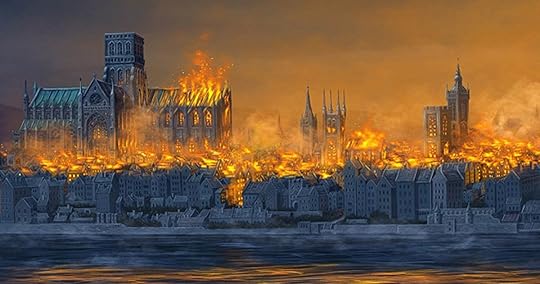
The 1666 Great Fire of London’s 350th anniversary was in 2016 (artistic depiction of the Great Fire in the Daily Mirror Online)
September 2, 1666 – The Great Fire of London began in a bakery in Pudding Lane near the Tower of London. Over the next three days, the fire gutted the medieval City of London inside the old Roman city wall. It consumed 13,200 houses, 87 parish churches, St Paul’s Cathedral, and most of the buildings of the City authorities. It is estimated to have destroyed the homes of 70,000 of the City’s 80,000 inhabitants. Amazingly, only six(!) people are thought to have died in the fire.
The Great Fire started at a bakery (or baker’s house) on Pudding Lane shortly after midnight on Sunday, 2 September and spread rapidly west across the City of London. The major firefighting technique of the time was to create firebreaks by means of demolition; this, however, was critically delayed owing to the indecisiveness of Lord Mayor of London. By the time that large-scale demolitions were ordered on Sunday night, the wind had already fanned the bakery fire into a firestorm that defeated such measures. The fire pushed north on Monday into the heart of the City.
Rather than admit the fire was a tragic accident, many people wanted to blame someone. The homeless population of London, as well as Dutch or French residents, were blamed for either starting the fire or helping to spread it. (Blaming immigrants and the poor is always a popular pastime, I’m afraid!) Mobs looted the shop of a French painter and destroyed it; an English blacksmith walked up to a Frenchman in the street and hit him over the head with an iron bar.
Fire was long considered one of the four basic building blocks of the universe; all matter was thought to arise from various combinations of the four elements of earth, air, fire, and water. Some thought fire was the most basic and fundamental of the elements. Fire was a magical, transformative element as it could melt ice, evaporate water, melt and purify metal or solder metals together, forge useless bits into weapons, or turn almost anything into something else, i.e. dust and ash. In Arabic mythology, the djinn were formed from fire and a soul, just as humans were formed from earth and a soul. Djinn were magical because fire itself was magical.
The post Great Fire of London appeared first on Stephen Morris, author.
August 28, 2017
UK Abandons Old Calendar
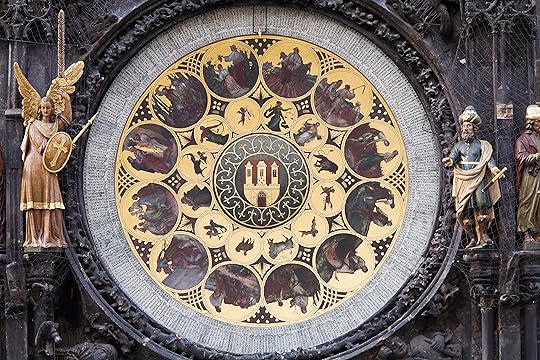
The Prague Astronomical Clock depicts one medallion per month, illustrating that month’s usual activities; September was associated with the harvest.
September 2, 1752 – The British ended their use of the Julian calendar, switching instead to the Gregorian calendar, resulting in a major adjustment as Wednesday, September 2, was followed by Thursday, September 14. The correction resulted in rioting by people who felt cheated and demanded the missing eleven days back.
Time, which seems so fixed and objective to us modern people, was traditionally considered very fluid and inexact. You could know what day of the week it was. If the officials told you, you could know what month it was and even what day of the month. But there was a repetitive nature to it all: Sunday was marked by church, another day was market day. August and September were always harvest-time. February and March were always time to plant the fields.
The law which changed the calendar also made New Year’s to be January 1. Until then, the New Year had been on March 25.
During much of history, until the end of the Middle Ages and Renaissance, many people thought that March 25 was the most important day of the year. All the most important events in history were thought to have occurred on March 25: the birthday of Adam, Moses leading the Israelites through the Red Sea, the Annunciation to the Virgin Mary, and Christ’s Crucifixion. March 25 was seen as the lynch-pin of history and time itself; everything revolved around March 25, which was also the vernal (springtime) equinox and the beginning of the new agricultural year, preparing the fields and planting seed.
The phoenix earned its legendary immortality by refusing to eat from the forbidden tree in the Garden of Eden. Every 500 years, on March 25, the bird was said to create a nest of herbs and spices, rest on it, and set itself on fire. After the fire died down, an egg laid by the phoenix was found among the ashes. The egg would hatch, and the phoenix would emerge, resurrected.
The post UK Abandons Old Calendar appeared first on Stephen Morris, author.
August 25, 2017
Aoife and Strongbow
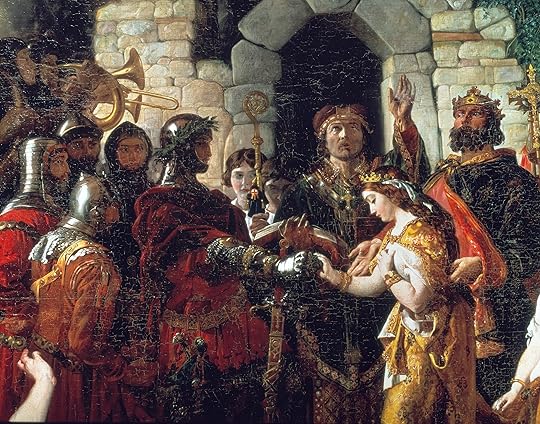
The Marriage of Strongbow and Aoife by Cork born historical painter Daniel Maclise (1806-1870) at the National Gallery of Ireland
Aoife, princess of Leinster, wed the English knight known as “Strongbow” on August 25, AD 1170. Aoife’s father, Diarmait Mac Murchada, had lost his seat as king of Leinster and sought military aid from England to reclaim it. Richard de Clare, a minor knight at the English court, responded to the Irish king’s request for aid; Diarmait promised that whichever knight helped him regain the throne would be given the his daughter Aoife as wife. Richard brought 1,200 fighting men with him and won the battle at Waterford, Ireland on August 23. He and Aoife were married on August 25 on the shore of the River Suir beneath a great oak tree that came to be known as “Strongbow’s Oak.” (The painting above shows the couple being wed in front of the stone tower that was built later alongside the oak.)
According to Irish law at that time, both the man and the woman had to consent to the marriage; it is fair to conclude that Aoife accepted her father’s arrangements. Aoife led troops in battle and is sometimes known as Red Eva (Aoife Rua).
When Diarmait died the next year, Strongbow claimed the throne by right of his marriage to Aoife and began the English occupation of Ireland which continued until the Irish Free State was established in 1922.
Aoife had two sons and a daughter with her husband Strongbow, and via their daughter, Isabel de Clare, within a few generations their descendants included much of the nobility of Europe including all the monarchs of Scotland since Robert I (1274–1329) and all those of England, Great Britain and the United Kingdom since Henry IV (1367–1413); and, apart from Anne of Cleves, all the queen consorts of Henry VIII.
Later folktales also identify Strongbow’s Oak as the location of the grave of the young woman known as the dearg-due (“red blood sucker”) who rises from the dead to seduce and kill men, lapping up their blood to sustain herself. The girl who became the dearg due was herself said to have been beaten to death by her English husband and he was her first victim when she rose from the grave as the vampire woman. The dearg due is an important character in the Come Hell or High Water trilogy.
In my upcoming project Earth to Earth, Ashes to Ashes the princess Aoife makes a bargain with the goddess Badb to be sure that Strongbow wins the battle; the English occupation of Ireland is therefore the result of witchcraft and magic. The goddess Badb is involved in creating the dearg due in an attempt to drive at least some of the English away from Waterford itself.
The post Aoife and Strongbow appeared first on Stephen Morris, author.
August 21, 2017
August 24, AD 79: Vesuvius Destroys Pompeii!

The Arch of Tiberius in the ruins of Pompeii (ohoto from the Smithsonian Magazine)
August 24, 79 A.D. – Vesuvius, an active volcano in southern Italy, erupted and destroyed the cities of Pompeii, Stabiae and Herculaneum. Although we think of the destruction of the cities as a sudden, unexpected catastrophe, there was ample time for most residents (18,000 out of 20,000) to escape Pompeii. They could see the volcano erupting for several hours before the ash and lava engulfed the city itself. The 2,000 people who died were the ones who refused to leave, who insisted that they would be safe, that the danger was being exaggerated by others, that the city would escape unscathed. (Aren’t there always people like that, in every natural disaster, who refuse to leave when they have the chance and then endanger others who have to come and rescue them? I remember the folks who refused to leave flood-prone area during Hurricane Sandy.)
Mythology tells us that Hercules, in the performance of his 12 labors, passed through the area and found “a hill which anciently vomited out fire … now called Vesuvius.” It was inhabited by bandits, “the sons of the Earth,” who were giants. With the assistance of the gods, Hercules pacified the region and went on. Because of his exploits in the area, one of the cities took the name “Herculaneum;” tourists can visit its ruins today although they are not as famous as the ruins of Pompeii.
Because the city of Pompeii was totally overwhelmed and buried by ash, it was perfectly preserved until its re-discovery in 1599 and then popularization in 1748. The objects that lay beneath the city have been preserved for more than a millennium because of the long lack of air and moisture. These artefacts provide an extraordinarily detailed insight into the life of a city during the Pax Romana. During the excavation, plaster was used to fill in the voids in the ash layers that once held human bodies. This allowed archaeologists to see the exact position the person was in when he or she died.
Pompeii has been a tourist destination for over 250 years. I was lucky enough to spend a day there in the autumn of 2014 (or was it 2013?). It was amazing to see such a perfectly preserved city, just waiting to be re-inhabited. I’ll be happy to occupy a villa, if one becomes available!
The post August 24, AD 79: Vesuvius Destroys Pompeii! appeared first on Stephen Morris, author.
August 14, 2017
Escape from Oz!
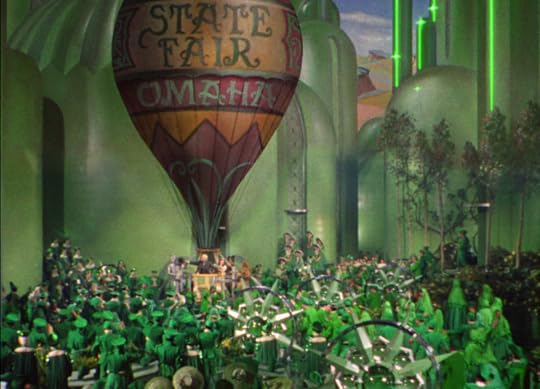
The Wizard of Oz intends to escape from the Emerald City in the same balloon that brought him from Kansas.
It was on August 17, 1978 that three Americans–Max Anderson, Ben Abruzzo, and Larry Newman, all from Albuquerque, New Mexico–made the first transatlantic balloon trip. Starting from Maine on August 11th, they traveled in Double Eagle II over 3,000 miles in 137 hours, landing about 60 miles west of Paris.
But perhaps the most famous hot air balloon ride of all time was one that only happened in our imaginations, in Hollywood. It was the balloon ride that brought Professor Marvel from Kansas to Oz in a windstorm, a tornado not unlike the one that brought Dorothy herself to Oz later. And it was in that same hot air balloon that Professor Marvel, after having been exposed as the “Wonderful Wizard of Oz,” proposed to take Dorothy with him back to Kansas. Of course, we all know that did NOT work out as planned! Toto saw a beautiful Siamese cat and jumped out of Dorothy’s arms at the last moment. Dorothy scrambled out of the balloon’s basket to get Toto back and the Professor, having already released the balloon’s ballast, was unable to bring the balloon back down to earth to retrieve Dorothy. He sailed off across the Emerald City and back to Kansas. He got there just in time to welcome Dorothy back when she awoke on her own bed–having returned to black-and-white Kansas herself thanks to the aid of Glinda the good Witch of the North (who told Dorothy to simply click her heels together three times as she repeated, “There’s no place like home!”)
Using air and wind to travel was a longtime dream of mankind. It was also one of the most famous accusations against those accused of witchcraft during the great European witch hunts of the 1600-1700s. Flying on broomsticks–like the wicked Witch of the West!–was taken as a sign of the perversity of the accused by the witchcraft judges but people like Professor Marvel (who were able to use air and wind in a “scientific” way even though he himself confessed, “I don’t know how it works!”) were regarded with awe and amazement.
Double standards? For sure! The boundaries between magic and science prove again to be so porous and permeable that one’s person’s science is another person’s magic and vice-versa!
The post Escape from Oz! appeared first on Stephen Morris, author.
August 7, 2017
#WerewolfWednesday

“Alexei” and I close-up at the Brooklyn Book Festival (September 2016)
I recently began a new feature on Facebook and Twitter by posting a brief, “fun fact” in honor of #WerewolfWednesday each week.
I got this idea during the International Thriller Writers conference I attended this July in midtown. (Over 700 authors from across North America and Canada were there but luckily I didn’t need to pay for airfare or hotel room; I only needed to ride the subway and buy a few extra lunches at a deli! The conference was a great experience — I learned a lot about writing, characterization, plotting, tension, etc. as well as practical things like what you can or cannot learn from an autopsy, how hostage negotiators work, how blood spatter can be examined, how the FBI forensics lab is organized. I met lots of thriller writers who work not only in supernatural thrillers but in many other subgenres as well. There were also lots of agents there and each agent I spoke with asked for sample pages of Earth to Earth, Ashes to Ashes–the novel I am currently working on.)
So far, #WerewolfWednesday has shared:
The elite did not believe werewolves existed. Church teaching insisted ALL werewolf claims were frauds.
Werewolf trials began in Switzerland during the 1600s and were finished by the late 1700s, just like witchcraft trials.
In Roman folktales, a man became a wolf after eating a child’s intestines but was restored to human form after 10 years.
Upcoming #WerewolfWednesday features will include werewolf folklore from the Satyricon, as well as from Slavic, French, Italian, and German sources.
If you haven’t “liked” or “followed” my Author Pages on Facebook or Twitter, click on the links above!
The post #WerewolfWednesday appeared first on Stephen Morris, author.
July 31, 2017
Hannukah in August?

Statue of Moses by Michelangelo, in the church of San Pietro in Vincoli, Rome. The relics of the Maccabees were kept in this same church.
The veneration of the Maccabean martyrs is unique in the Judeo-Christian tradition: they are the only martyrs commemorated by Jews and Christians alike. The seventh chapter of the Second Book of Maccabees (in the Old Testament) tells the story of seven faithful Jewish brothers who maintained their fidelity to the Law of God in the face of persecution during the tyranny of Antiochus IV in the second century B.C. The New Testament book of Hebrews commends these martyrs of Maccabees as exemplars of living faith (Heb 11:35).
These seven Jewish brothers and their mother were arrested and ordered to eat the un-kosher flesh of a pig. The horrific murder of these Maccabean martyrs was so terrible and gruesome that we derived an English word from it—-macabre.
The festival of Hanukkah in December celebrates the revolt led by the Maccabees against the Syrian emperor Antiochus IV. Christians have long commemorated the Maccabees on August 1 and the relics of the 7 Maccabee brothers, with their mother and teacher were long kept in the Church of St. Peter’s Chains (Rome). The relics were sent to Germany to be housed in a church in Cologne (the same city where the relics of the Magi are kept); evidently the Maccabean relics had been kept in Cologne before they had been sent to Rome.
By keeping the Maccabean relics and the statue of Moses in the Church of St. Peter’s Chains, we can see the connection between the Law of Moses and those Maccabean martyrs who died for refusing to abandon that Law. Even more, their memory is joined with the imprisonment and eventual martyrdom of the Apostle Peter. (We know that the festival of Hanukkah was still fairly new in the first century AD but that Jesus celebrated it with the apostles in John 10:22-23.)
You can find a very interesting article (in German!) here about the relics of the Maccabees that includes close-up photos of the golden reliquary which contains their bones. (If you open the page using Chrome, it will offer to translate the page for you–I want to thank my daughter Rebekah for teaching me that trick!)
The reliquary itself is fascinating. It was apparently made in 1500; it is a wooden box in the form of a church, covered with gilded copper plates. The walls of the shrine and top portions are composed of 40 scenes in which the story of the Maccabee brothers and their mother is placed in parallel with the suffering of Christ and His mother Mary. One of the most obvious examples is the contrast of the flagellation of the Maccabee brothers and the flagellation of Jesus. On the front of the shrine is the Coronation of Mary and the Coronation of the Maccabees, while on the back the Ascension of Christ is depicted with the heavenly glorification of the Maccabees.

The shrine for the Maccabees’ relics in St. Andrew’s Church (Cologne, Germany).
The post Hannukah in August? appeared first on Stephen Morris, author.
July 24, 2017
Map of Bones
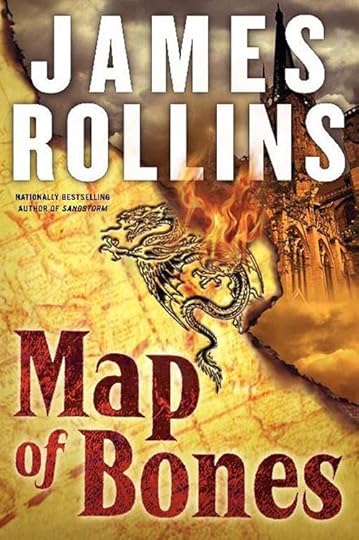
In the wrong hands, the bones of the Magi could destroy the world!
During a crowded service at a cathedral in Germany, armed intruders in monks’ robes unleash a nightmare of blood and destruction. But the killers have not come for gold; they seek a more valuable prize: the bones of the Magi who once paid homage to a newborn savior . . . a treasure that could reshape the world.
With the Vatican in turmoil, Sigma Force under the command of Grayson Pierce leaps into action, pursuing a deadly mystery that weaves through sites of the Seven Wonders of the World and ends at the doorstep of an ancient, mystical, and terrifying secret order. For there are those with dark plans for the stolen sacred remains that will alter the future of humankind . . . when science and religion unite to unleash a horror not seen since the beginning of time.
Looking for a good book to read this summer? I highly recommend Map of Bones by James Rollins.
The book opens with an attack on the relics (bones) of the Magi in Cologne on July 23, the anniversary of the day the relics were brought to Cologne in 1164. The Three Kings were very popular and attracted a constant stream of pilgrims to Cologne. Construction of the present Cologne Cathedral was begun in 1248 to house these important relics. The cathedral took 632 years to complete and is now the largest Gothic church in northern Europe.
A mystery, “The Bishop and the Three Kings” by Andrew Greeley, is also about the theft of the shrine.
Read more about the shrine of the Magi in Cologne here.
The post Map of Bones appeared first on Stephen Morris, author.
July 17, 2017
St.-Swithun-in-the-Swamp

Contemporary Shrine of St Swithun in Winchester Cathedral, Hampshire, England UK
When I was in high school and hung out in the church office, the secretary and I often made jokes about a fictional parish we named “St.-Swithun-in-the-swamp.” The poor people of St. Swithun’s suffered many indignities and outrageous fortune’s arrows, not least their unfortunate location in the murky swamp. Imagine my surprise, many years later, to discover the real St. Swithun (who died in AD 862), bishop of Winchester, whose memory is celebrated every July 15.
St. Swithun was known for many miracles. One of the most famous incidents involved a group of workmen who broke all the eggs in a poor woman’s basket as she was crossing a bridge. Swithun demanded the workmen apologize to the woman and then he blessed her basket of eggs–which repaired all the broken shells and runny yolks so that she had intact eggs again.
St. Swithun is also said to influence the weather. His feast day is July 15 and determines the weather for the next six weeks–much as the weather on Groundhog Day determines the weather for the rest of February and March.
“St Swithun’s day if thou dost rain
For forty days it will remain
St Swithun’s day if thou be fair
For forty days ’twill rain nae mare.”
Swithun was initially buried out of doors, rather than in his cathedral, apparently at his own request. William of Malmesbury recorded that the bishop left instructions that his body should be buried outside the church, “where it might be subject to the feet of passers-by and to the raindrops pouring from on high,” which has been taken as indicating that the legend was already well known in the 12th century.
There might be a scientific basis to the weather pattern behind the legend of St Swithun’s day and the weather. Around the middle of July, the jet stream settles into a pattern which, in the majority of years, holds reasonably steady until the end of August. When the jet stream lies north of the British Isles then continental high pressure is able to move in; when it lies across or south of the British Isles, Arctic air and Atlantic weather systems predominate.
The post St.-Swithun-in-the-Swamp appeared first on Stephen Morris, author.
July 10, 2017
July 12, 1801: Two Strikes? Vampires home free!
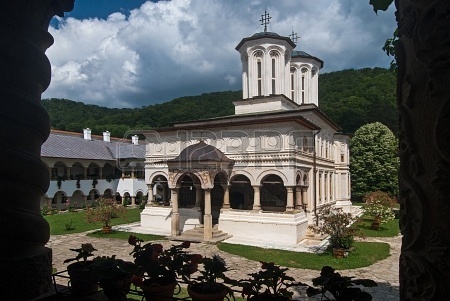
The Monastery of Horezu, a UNESCO World Heritage site in Wallachia, Romania
Wallachia, the region of southern Romania which borders the more famous region of Transylvania to the north, was an independent principality until 1859, when it united with Moldavia to form the basis of the modern state of Romania. Transylvania joined 59 years later (1918) to form the new Kingdom of Romania. Vlad the Impaler, often thought to have inspired Bram Stoker’s Dracula, was actually the ruler of Wallachia (not Transylvania).
In 1801, before its unification with Moldavia, farmers and rural peasants still believed fervently in vampires even though modern science was beginning to dispel belief in vampires among the aristocracy. One of the more common ways farmers had in Wallachia to dispatch a vampire was to exhume the body and decapitate the corpse. If the vampire seemed to still attack the living after that, then the body was exhumed again and the body was either turned face-down or a wooden stake driven through it. If the attacks still seemed to continue, the body would be dug up a third time and burned (which was a difficult undertaking because dead bodies are so moist and therefore the last resort of vampire dispatchers — you can read about the fascinating science involved in burning dead bodies in Vampires, Burial, and Death: Folklore and Reality by Paul Barber).
It was the continued exhumation of corpses which came to the attention of the Wallachian authorities. On July 1, 1801 the authorities in Wallachia proclaimed that a corpse could not be exhumed more than TWICE in Wallachian territory if it was suspected of being a vampire!
Blood was not only important to the vampires the Wallachian farmers were trying to destroy. The stunningly beautiful Curtea de Arges Monastery was built by a ruler of Wallachia in 1512. But the walls kept crumbling because of a problem with the foundations. The architect and construction workers resorted to an ancient practice to reinforce the foundations: they sprinkled the blood of a newborn baby on the foundations and the walls stopped crumbling. (Another version of the story says how the pregnant wife of the architect was sealed alive inside the walls in order to stop them from crumbling.)
The post July 12, 1801: Two Strikes? Vampires home free! appeared first on Stephen Morris, author.



